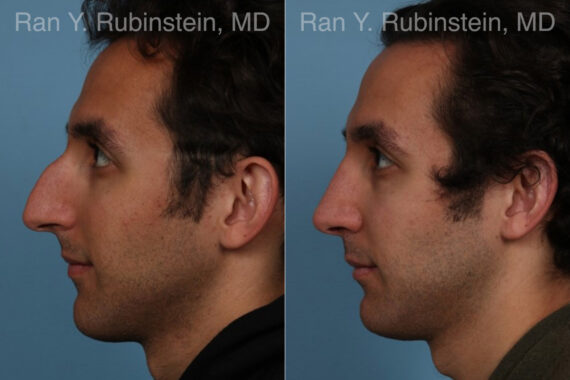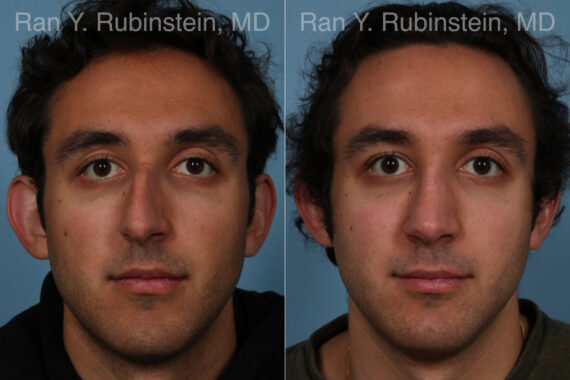Have you ever looked in the mirror and wondered if subtle changes to your nose could enhance your entire face? Whether it’s smoothing a bump, refining the tip, or balancing your nasal profile, the nose plays a major role in facial harmony. With today’s advancements in cosmetic procedures, you have more than one option to achieve your aesthetic goals.
If you’ve been torn between a liquid nose job and traditional rhinoplasty, you’re not alone. These two approaches offer very different experiences and results—but understanding their key differences is the first step to making the best choice for your face. Keep reading to find out which option suits your needs best.

What are the pros and cons of a liquid vs surgical nose job?
Both rhinoplasty procedures and liquid nose jobs have their own advantages and disadvantages, and the right choice depends on your goals and expectations. A liquid nose job is a non-surgical alternative that uses dermal fillers to temporarily enhance nose shape and nasal profile. It’s great for patients who want to smooth minor bumps, lift the tip, or make subtle corrections without undergoing surgery. However, results are temporal, usually lasting around 6 to 12 months, and it doesn’t reduce nose size or correct structural issues.
Surgical rhinoplasty, on the other hand, is a permanent solution that can alter both the shape and size of the nose. It’s ideal for those looking for long-term or more dramatic changes, including functional improvements. While it does involve more downtime and a longer recovery, it offers precise reshaping that can’t be achieved with fillers alone. For those weighing their options, both procedures offer viable paths—one more temporary and less invasive, the other more comprehensive and enduring.
Difference Between the Procedures
While both nose filler and rhinoplasty aim to enhance the appearance of the nose, the way they’re performed and what they can achieve differ significantly. From the use of dermal fillers to surgical reshaping of bone and cartilage, each approach offers unique benefits depending on your cosmetic goals and desired outcomes.
Liquid Rhinoplasty
A liquid rhinoplasty, also known as a nonsurgical rhinoplasty, is a quick, in-office procedure that uses dermal fillers to enhance the shape and appearance of the nose. This approach is ideal for patients looking to correct minor asymmetries, camouflage a dorsal hump on the nasal bridge, or lift a drooping nasal tip without undergoing surgery.
The procedure involves targeted injections of hyaluronic acid-based fillers into specific areas of the nose, depending on the desired outcome. Results can vary based on the type of filler used, but typically last from 6 to 12 months. Because it doesn’t require incisions or general anesthesia, liquid rhinoplasty offers immediate results with minimal downtime—making it an appealing option for those seeking subtle, reversible changes to their profile.
Surgical Rhinoplasty
Traditional rhinoplasty surgery is a more involved procedure designed to permanently alter the nose’s appearance and, when needed, improve function. It requires careful planning and precise surgical techniques to reshape the underlying nasal structures, such as bone and cartilage, through incisions made either inside the nostrils or across the columella.
These surgical procedures are highly customizable, allowing for adjustments in both nose size and shape to better complement the rest of the face. As a form of plastic surgery, rhinoplasty is often the best option for patients seeking dramatic or functional changes. Although the recovery period is longer compared to non-invasive options, the results are long-lasting and often life-changing for the right candidate.
Cost of Nose Filler vs Rhinoplasty
Understanding the cost difference between a liquid rhinoplasty and a surgical one is a key part of the decision-making process. The two procedures vary greatly in complexity, materials, and longevity, which directly impact their price. Here’s a closer look at what you can expect to pay depending on the type of nose enhancement you choose.
Liquid Rhinoplasty Cost
Liquid rhinoplasty is significantly more affordable than surgery, largely due to its non-invasive nature and the absence of operating room or anesthesia fees. The cost typically ranges from $500 to $2,800 per session, depending on the provider, geographic location, and type of filler used. Since the results are temporary and usually last 6 to 12 months, maintenance treatments are necessary to preserve your new look, which should be factored into the long-term cost. Still, for many, it’s a cost-effective way to test drive changes before committing to surgery.
Surgical Rhinoplasty Cost
Surgical rhinoplasty is a more significant financial investment due to the complexity of the procedure and the resources involved. Costs generally range from $4,000 to $23,000, depending on the surgeon’s expertise, location, facility fees, anesthesia, and post-op care. While the initial price tag is higher than that of a liquid rhinoplasty, it’s important to remember that this is typically a one-time procedure with permanent results. For patients seeking long-term change or functional correction, the cost of traditional rhinoplasty often reflects its lasting value.
Start Your Journey to Success, Don’t Wait More!
Join our satisfied clients who’ve experienced safe, effective treatments.
Recovery Time and Aftercare
Downtime and aftercare can play a big role in choosing between a liquid nose job and surgical rhinoplasty. Each option comes with its own healing process, time commitment, and post-procedure instructions. Here’s what you should know about recovering from each treatment so you can plan accordingly.
Liquid Rhinoplasty Recovery
Recovery from a liquid rhinoplasty is usually quick and simple, with most patients returning to normal activities the same day. Some minor swelling, redness, or tenderness around the injection sites may occur but typically subsides within a few days. There’s no need for bandages or downtime, and aftercare mainly involves avoiding pressure on the nose and refraining from strenuous activities for 24 to 48 hours. Because the procedure is non-surgical, the healing process is minimal, making it an attractive option for those seeking subtle enhancements without disruption to daily life.
Surgical Rhinoplasty Recovery
Surgical rhinoplasty requires a more extended recovery period, typically involving about one to two weeks of downtime. During the first few days, patients may experience swelling, bruising around the eyes, and nasal congestion. A splint is usually worn for the first week, and strenuous activity should be avoided for several weeks. Full healing, including the final refinement of nasal shape, can take up to a year. Following your surgeon’s aftercare instructions closely is essential for minimizing risks and ensuring a smooth recovery with optimal results.
Risks of Both Types of Nose Treatments
All cosmetic procedures come with potential risks, and understanding them is essential for any well-informed decision. While both liquid and surgical rhinoplasty are generally safe, each carries its own set of possible complications. The level of risk depends on the procedure itself, the provider’s experience, and how individual patients respond—especially in the case of a more invasive procedure like traditional rhinoplasty.
Liquid Rhinoplasty Risks
Although nonsurgical, a liquid rhinoplasty still carries some risks. The most common side effects include swelling, bruising, and tenderness at the injection sites. In rare cases, improper injection technique can lead to more serious complications like vascular occlusion, which may compromise blood flow to the skin or even cause tissue damage. Choosing a qualified injector experienced in nasal anatomy greatly minimizes these risks. Since results are temporary, any complications that do occur can often be managed more easily than with surgery—but safety still relies heavily on the skill of the provider.
Surgical Rhinoplasty Risks
As with any invasive procedure, surgical rhinoplasty comes with a broader range of potential risks. Common concerns include prolonged swelling, infection, scarring, and adverse reactions to anesthesia. Because the nose is a delicate and complex structure, even minor imperfections post-surgery can lead to dissatisfaction, sometimes resulting in the need for revision rhinoplasty. In more complicated cases, this may involve multiple surgeries to achieve the desired outcome. However, working with a skilled facial plastic surgeon greatly reduces these risks and increases the likelihood of a successful, lasting result.
Real Nose Surgery Results
* All patients are unique and individual results may vary.
Schedule a Consultation with a Facial Plastic Surgeon
Choosing the right professional for your nose treatment is just as important as choosing the procedure itself. A highly experienced and board-certified facial plastic surgeon will have the skill and artistic eye necessary to ensure safe results that look natural and balanced with your unique facial features.
Dr. Ran Y. Rubinstein is a double board-certified facial plastic surgeon who has specialized exclusively in facial procedures for over 20 years. Beyond performing rhinoplasty and liquid nose jobs, he also trains other physicians in advanced injectable and laser techniques. To find out whether a rhinoplasty or nose filler is right for you, call us at (845) 863-1772 to schedule your consultation today.


